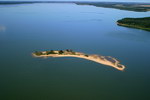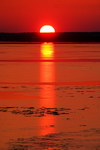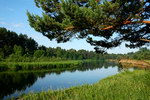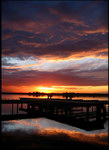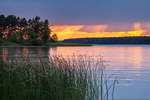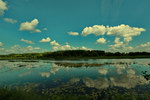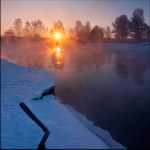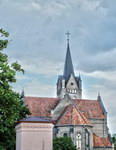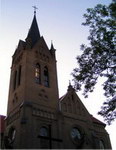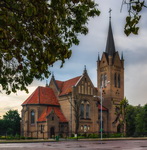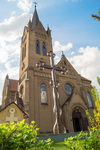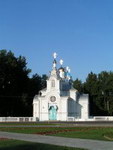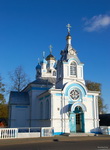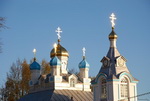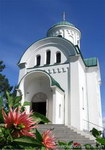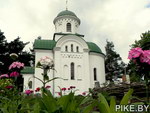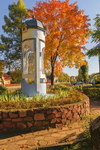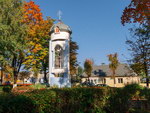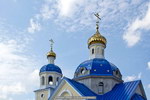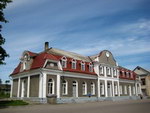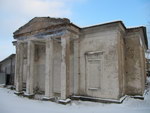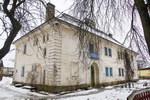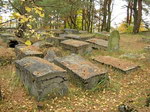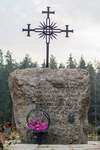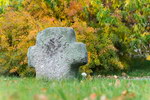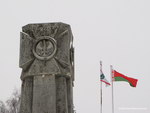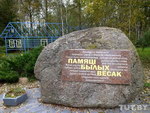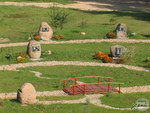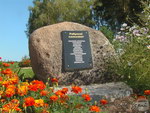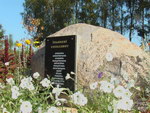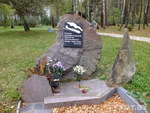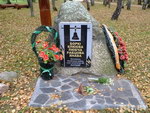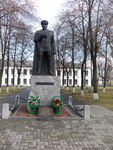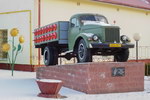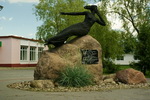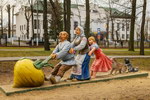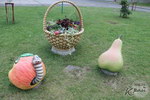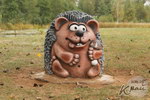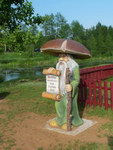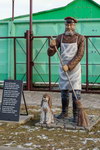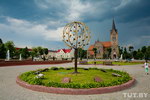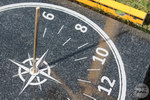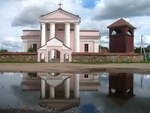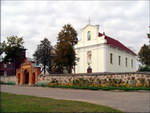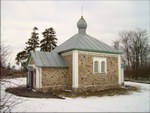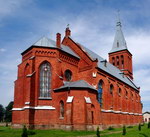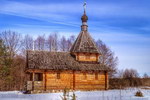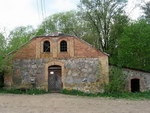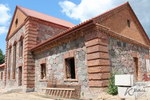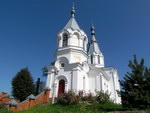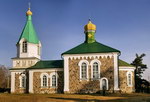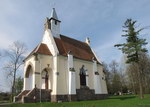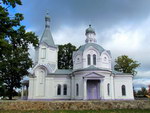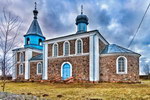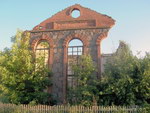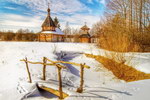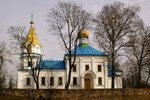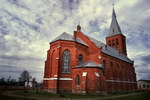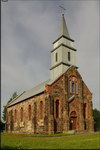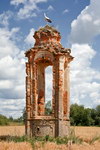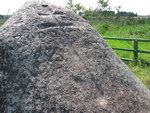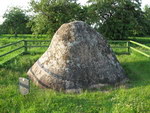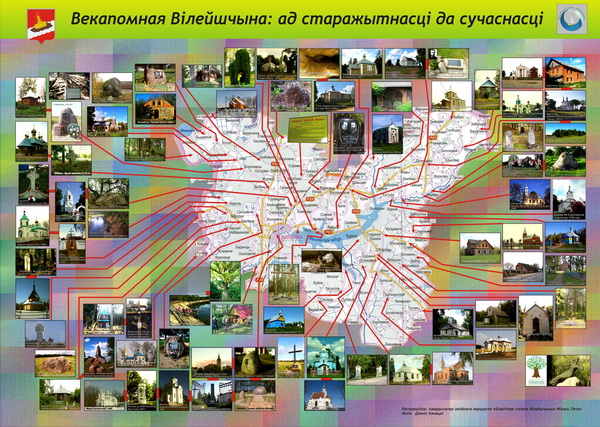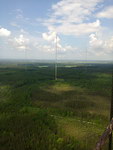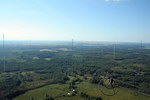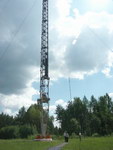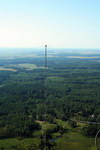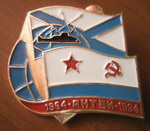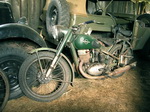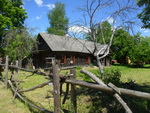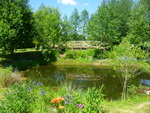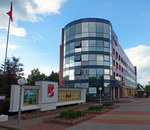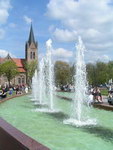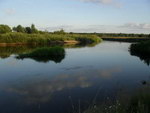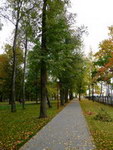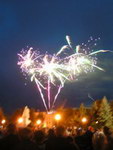
Unofficial information site of Vileyka
Vileyka-Info
There are more than 320 historical, architectural, archaeological and geological monuments on the territory of the Vileyka region. 26 of them are included in the State List of Historical and Cultural Heritage of the Republic of Belarus. The presence of unique natural and technological objects, the constant increase in the number of places for cultural and active recreation makes the Vileyka region attractive for tourists.
The current page lists some of the most interesting places in Vileyka and Vileyka district to visit.
1. Vileyka reservoir and the river Viliya.
The Vileyka reservoir attracts fishing enthusiasts and outdoor enthusiasts from all over the republic as well as from other countries.
The Vileyka reservoir is the largest artificial reservoir in Belarus, second only to the largest natural reservoir - Lake Naroch. Reservoir area - 64.6 sq. km; length - 27 km; width - 3 km; depth - up to 13 m; average depth - 3.7 m; volume of water (average) - 238 million cubic meters; catchment area - 4120 sq. km; general mineralization of water - 280-320 mg/l.
The construction of the Vileyka reservoir began in 1968. The reason for the construction was the need to increase the volume of water supply in Minsk. To do this it was necessary to transfer part of the flow of the more full-flowing rivers of Belarus to the Svisloch River. Simultaneously with the construction of the Vileyka reservoir a water canal was being built to supply Minsk with drinking water. Now this canal helps transfer water from Viliya to Svisloch. At the same time, the water rises to a level of more than 70 meters with the help of several hydraulic pumping stations. The blocking of the Viliya River was carried out in 1973, and in early 1975 the waters of the Vileyka reservoir went through the canal to the capital. The annual discharge of water is about 575 million tons.
The Vileyka reservoir is a place for water-skiing, water-motor, rowing and sailing, and is also very popular for summer and winter fishing. Pike, perch, pike perch, bream, crucian carp, ruff, roach and other fish species are found in the reservoir. In summer, the upper layers of water warm up to 18-22°C, in shallow water - up to 24°C. The reservoir freezes in early December, opens in April, the ice thickness is up to 70 cm. The maximum water level is during the spring flood (April-June), the minimum is in February-March.
In 2010, the Vileyka Reservoir was ranked fifth in the TOP 10 Best Places to Rest in Belarus.
You may see maps of the Vileyka Reservoir on this site.
The Viliya River is the largest tributary of the Neman, it flows through the territory of Belarus and Lithuania, in Lithuania it is called the Neris. The Belarusian cities of Vileyka, Smorgon, Lithuanian Vilnius, Kaunas and others are located on it.
Due to its great length, sufficient depth, abundance of fish species, picturesque wooded banks, Viliya is one of the most visited rivers in Belarus. It is attractive for a quiet holiday on the shore, and for kayaking, and for lovers of fishing.
2. Architectural and historical monuments.
Several architectural monuments of the late 19th and early 20th centuries have been preserved in Vileyka. The two most famous of them are located on the Central Square just a few tens meters from each other. This is the Catholic Church of the Holy Cross and the Orthodoxal Church of the Reverend Mary of Egypt. The Catholic Church of the Holy Cross was built in the period from 1906 to 1913 according to the project of the architect August Klein. The church is stylized to ancient Gothic temples. Restored in 1988-89. The Church of the Reverend Mary of Egypt is constructed in 1865, the building is stylized to the ancient Russian architecture. Both architectural structures are adjacent to buildings of later construction (mid-20th century).
The modern architecture of the city, especially the buildings of religious purpose, also deserve attention.
Some other architectural monuments of the beginning and middle of the XX century also are worth mentioning. These are the railway station building and the old water tower located next to it; the dental polyclinic and the residential house located next door; a number of buildings on the streets Savietskaya, Partyzanskaya, May 1, Vadapianava.
Historical and memorial monuments located within Vileika or very close to it include: the cemetery of Polish soldiers of the 1920s and 1930s and the memorial monument located there; Jewish cemetery; the cemetery of Russian soldiers of the 1st World War; memorial stone to Yu. Pilsudski; a memorial stone to those who died in the Vileyka prison.
Particular attention should be paid to the recently opened memorial complex "Memory of Vanished Villages". It is located near the northern border of the city and consists of name boulders dedicated to the 13 village councils of the Vileyka district and the city of Vileyka itself. On each boulder there is a plaque with a list of settlements that, for a number of reasons, have gone down in history. And there are a lot of them: 253 settlements have disappeared from the map in the Vileyka district in the last half century. The reasons are different: these are the tragic events of the Great Patriotic War, the construction of the Vileyka reservoir, the unification of some settlements, and the reduction of the rural population. One of the stones is made in the form of a bell and symbolizes the villages that suffered the fate of Khatyn - there are five of them in the district. In the center lays a 25-ton boulder with a call to stop and think about your roots and places where you were born.
There are quite a few sculptural compositions and monuments in Vileyka. Of course, among them there is the inevitable monument to Lenin, located on the Central Square, as well as other monuments such as the monument to the liberating soldiers on Svoboda Square, the monument to Azi Aslanov on the str. Sovetskaya or the car for the delivery of gas cylinders near the "Raigaz" building. But there are also sculptures of a different nature. Next to the park the sculpture of "Vilyana" is located. It is created by Uladzimir Slabodchykau in honor of the 150th anniversary of the water expedition of Konstantin Tyshkevich, which passed along the Viliya River. The river is symbolized by Vilyana, a character from a local legend, whose tears once gave rise to this river.
At the beginning of the 21st century, fun and bright sculptural compositions by Valery Aparik appeared in the city. Most of these compositions are plots based on folk tales. These are the compositions "Turnip", "Owl and Woodpecker", 'Frog-Princess" in the city park, "Hedgehog" in the Vilyan farm. A slightly different is the sculpture "Janitor", located near the building of housing and communal services.
Other objects of urban sculpture include a monument to a horseshoe and a sundial installed on the territory of the Vileika Vocational and Technical College, as well as the "Tree of Friendship" on the Central Square.
Viley district is also rich in interesting historical and architectural monuments. Since there are quite a few of them, only some of the most interesting ones can be mentioned on this page:
- Church of the Visitation of the Virgin Mary in the village of Alkovichi (late 19th - early 20th century),
- Church of the Immaculate Conception of the Virgin Mary in Kostenevichi (1763),
- the stone "Varatishyn's Cross" in the village Kamena (boulder 3.7x3.5x2.1 m with an embossed image of a cross, 12th century),
- Church of the Assumption (1868) and the ruins of the Aginsky manor (XVIII century) in the village Ruchitsy,
- the remains of the Bogdanovich manor in the village of Stayki (XVIII-XIX centuries),
- Church of the Intercession (19th century) and the Church of the Nativity of the Virgin Mary (1908) in the village of Viazyn,
- Church of St. Stanislav (1853), the Trinity Church (1870) and a synagogue (early 20th century) in the village Dolginovo,
- Church of the Heart of Jesus in Ilya (1907-1909),
- Church of St. Peter and Paul in the village Kosuta (1868),
- Church of the Nativity of the Virgin in the village Kurenez (before 1880),
- Church of St. Nicholas in the village Latygol (1771),
- the manor "Churlyony" with a steam mill in the village Lytsevichi (XIX century),
- Church of the Nativity of the Virgin in the village Milcha (XIX century),
- the remains of the Bogdanovich manor in the village of Obodovtsy (XIX century),
- Church of the Assumption in the village Rabun (1862),
- Bogdanovich manor in the village Starinki (beginning of the 20th century),
- the chapel of St. Boris and Hleb in the village Zabrodje (2006).
You can see and download a tourist map with the location of the sights of Vileika and the Vileika district (click to download, 6.5 MB)
3. Communication node No. 43 of the Russian Navy ("Antey" radio station)
Just a few kilometers from Vileika, there is the 43rd communication node of the Russian Navy (Radio Station "Antey"), which provides ultra-long-wave communication with nuclear submarines that are on combat duty in the areas of the Atlantic, Indian, and partly Pacific oceans. In addition, the communication unit conducts radio-technical reconnaissance and radio-electronic warfare and works in the interests of other types of Armed Forces and branches of the military, broadcasting reference time signals. The station was commissioned on January 22, 1964.
Of course, the radio station "Antey" is not a tourist attraction, but at the same time it remains one of the "calling cards" of Vileika. After all, objects of this scale in the entire former Soviet Union could be counted on the fingers, and now there are even fewer still in operation. And it is not easy to maintain the secrecy of the communication node, whose 300-meter antennas are clearly visible from afar.
Try to estimate the scale of "Anthea". The total area of the facility is 6.5 sq. km. The communication node consists of 15 lattice support masts with a height of 270 m and 3 round masts with a height of 305 m. The masts support an umbrella-type antenna canvas, which consists of stretched tracks weighing 900 tons. The area of the antenna is 4 sq. km. All details are grounded, the total length of the grounding circuit laid in the ground is more than 300 km.
The station is a repeater signal amplifier and is equipped with a 1 MW transmitter. For comparison: the Vileyka mini-CHP, built in 2006 (the most powerful mini-CHP in the republic at the time of construction) produces 2.4 MW of electricity. This is enough to light the entire city.
Despite all the grandeur of the structure, it is not static. With the help of winches, the entire aerial canvas can be lowered to the ground and raised back to almost 3 hundred meters high. The circular center fins are also UHF transmitting antennas standed on porcelain insulators. To replace an insulator the mast is raised a few centimeters above the ground with the help of jacks. By the way, the weight of one such mast is 300 tons.
Under each mast there is an antenna pavilion with a complex of equipment that ensures the operation of the radio station. The premises of the SDV radio station are located in a fortification structure and are buried underground. They are autonomous and equipped with all necessary life support systems. These bunkers contain a radio transmitter and an atomic clock of precise time. The accuracy of their work is impressive: an error of one second can occur in about 300,000 years.
4. Exhibitions, museums, fairs.
The city has a historical and local history museum and an exhibition hall.
The Vileyka Museum of Local History stores more than 27,000 exhibits, including materials from archaeological excavations, a coin treasure of the 17th century, church chronicles of the end of the 19th century, documents and photos on the history of the city and the region, evidence of the partisan movement and the patriotic underground during the Great Patriotic War, etc.
Also, the Vileyka museum conducts tours of the city and along the tourist routes of the Vileyka region, organizes accompaniment of holidays according to ancient traditions and rituals, and sells souvenir products.
The museum is located at Sq. Svobody, 1. Working hours are from 9:00 a.m. to 5:00 p.m. except Monday and the last Friday of the month. Tel.: (01771) 56405. Museum website: http://vilmuseum.by
Exhibition hall is also located on the Sq. Svobody, it is the venue for various exhibitions and sales exhibitions. Art works of brush masters of Vileyka land, works of folk crafts are exhibited here, thematic exhibitions and cultural and artistic events are held regularly, and temporary expositions of various interesting exhibits are held. The hall is open from 9:00 a.m. to 5:00 p.m., except Mondays. Tel.: (01771) 54147.
Various exhibitions and fairs are also held from time to time in the city center of culture, located at the address of st. 21 Vadapianava Street, phone: (01771) 54372, or on the Central Square of the city. During fairs, craftsmen from other regions of Belarus often come to Vileyka with their works.
Vileyka District has the Zabrodje Memorial Ethnographic Complex. This is the only place of its kind in the country, where four unique museums for Belarus are concentrated on an area of ??40000 sq. m under the open sky.
The complex is open and working daily:
- the first museum of the history of the First World War in Belarus, which stores more than 2,000 exhibits: uniforms and weapons, gas masks, documents and photographs, household items of soldiers and personal items in memory of loved ones;
- a museum of retro cars, where rarities of the 30s-90s of the 20th century are collected: ZIS-5, GAZ-67, GAZ M1, Willys, Opel Kadett, Opel Blitz, a collection of motorcycles and bicycles;
- a museum of a century-old lifestyle (ancient furniture, towels, clothes, household utensils, musical instruments, photos);
- a forge and a bathhouse, which is already two centuries old;
- a museum of the USSR with a cinema veranda;
- creative workshops of the artist and director of the puppet theater.
There, on the bank of the river, you can see a building built in the style of the XVI-XVII centuries. This is wooden Barysahleb chapel in memory of all who died in military operations. Also among the most honored places in Zabrodje and its surroundings: the infirmary cemetery from the time of the First World War and a 6-meter cross at the burial near the military camp, a memorial chapel in honor of the 80th anniversary of the end of the war, a stele and a stone at the place of death of the Cossack Daniil Shevchenko.
Authentic peasant houses and tent sites are open for tourists in the "Zabrodje" complex, there is a summer cafe and a souvenir shop, excursions and entertainment programs are offered. Museums are open daily from 10:00 a.m. to 7:00 p.m. without days off. Phone: +375 29 333-84-46, +375 29 651-74-44. Website of the complex: http://www.zabrodje.com
5. Entertainment and recreation.
Guests of Vileyka can spend the night in the renovated hotel "Viliya", located at st. Partizanskaya, 36. You can book the room by calling (01771) 55367. In addition, there are several homesteads, cottages and campsites in the area, where you can also find and book a place to stay overnight.
For connoisseurs of cultural events, it is recommended to visit the city House of Culture, located at st. Vodopianova, 21. Concert performances by city performers and art groups, tours of Belarusian and foreign artists of various genres, festive events timed to major state and other holidays are periodically held in its halls.
Movie lovers can visit the "Mir" cinema, located at st. Kastrychnitskaya next to the Central Square and Vileika church.
A place for lunch or dinner can be one of the city cafes, concentrated mainly in the central part of the city. To find cafes and bars, use the interactive city map located on the page City maps.
For a peaceful vacation within the city limits you can choose the Central Square with many benches and a beautiful fountain, a small city park that goes down to the very shore of Vilia, as well as equipped recreation areas "Vilyanin Khutar" and "Dubovka". "Vilyanin Khutar" is located on the peninsula of a small lake near the bridge over Viliya on the way out of the city in the direction of Molodechno. The recreation area "Dubovka" is a plot in the forest equipped with wooden gazebos near the exit from the city in the direction of the v. Ruchevye and v. Osipovichi.
The main cultural and mass events on the occasion of major holidays are held on the Central Square of the city, on Svoboda Square, on a specially equipped site near the village Dubovka.
